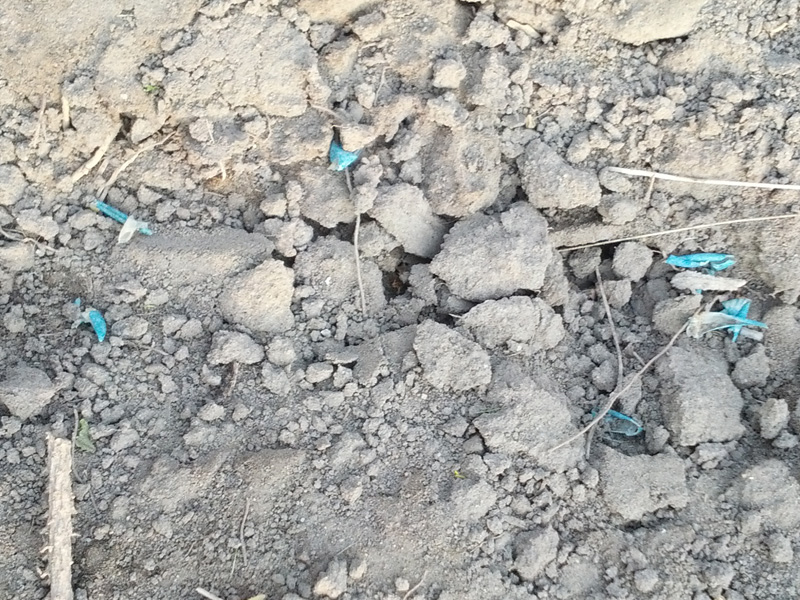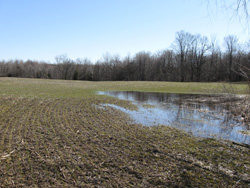
The Anishinaabek youth bringing land-based learning to their peers
In Georgian Bay, First Nations youth are coming together over hide tanning, language lessons and...
For about a decade, bee populations around the world have been experiencing massive declines for mysterious reasons. The phenomenon, often called Colony Collapse Disorder (CCD), is characterized by a rapid loss of worker bees and has been linked to a wide range of causes: cell phone frequencies, mites and pesticides. It isn’t until recently that the massive bee deaths have been directly linked to the use of neonicotinoid pesticides.
Neonicotinoids, or neonics, are neuro-active insecticides, chemically related to nicotine. They came into development in the 1980’s and 90’s by Shell Oil Company and then Bayer pharmaceuticals. Neonics are hyper-toxic pesticides that are designed to be water soluble, so they are able to travel and contaminate pollen-dense plant life far and wide. The wide reach and long life of neonics has proven to be deadly to pollinators like bees and birds and detrimental to humans as it has penetrated groundwater systems into drinking water.
Recently, when they found 50,000 dead bees in a department store parking lot, the state of Oregon temporarily banned the use of these pesticides. The bans are in place until the research can show that the chemicals will not threaten bee populations. Likewise, the European Parliament put out a report in 2012 that specifically links the use of neonics to irreversible hive destruction. A moratorium has been placed on these pesticides in the European Union.

However, this spring, farmers in Ontario experienced bee mortalities in unprecedented numbers. These deaths have been researched by scientists worldwide and are undeniably linked to the use of neonicotinoid-coated corn and soy seeds.
Despite the evidence, bans on neonics are not in place yet in Canada. According to a report by Maria Szabo for the Canadian Civil Liberties Association, the Pest Management Regulatory Agency (PMRA) is calling for further assessment before a ban will be implemented and they claim the process could take years to complete.
In order to better understand the level of crisis that Ontario beekeepers are experiencing, DeSmog Canada spoke to Tibor Szabo Jr. of Szabo Bee Enterprises. Tibor is a queen producer, the Vice president of the Ontario Beekeepers Association (OBA), third generation beekeeper, and son of Dr. Tibor Szabo, Order of Canada recipient and Apiculturist for Agriculture Canada.
"I've never seen anything like it," Tibor said.
He tells us that he and his father first noticed the bees were being poisoned four years ago when they found that some of their hives had far fewer adult bees than what would be considered healthy. The bees were acting strange and appeared to be sick and disoriented. A full report on his findings is published at honeybees.ca.
“It was confusing,” he said. “We didn’t think that anyone was using any kind of insecticide in this area… there are, however a few corn and soy fields nearby. We had no idea that the bees were dying because of the agricultural fields.”
Last spring, Tibor discovered that hives placed nearby to agricultural fields experienced a 90% mortality rate. “There were piles and piles of dead bees,” he said.
He had heard that other beekeepers in Ontario and the US were experiencing similar things and he was told to send the dead bees to the PMRA for testing. He discovered tests for 80% of Ontario apiaries came back positive for high levels of clothianidin, a Bayer neonicotinoid insecticide, used to coat corn, “one gram of [this] can kill 25 metric tons of bees,” he said.

What worries him even further is that the chemicals stay present in the water and soil and re-contaminate crops for over three years. “There were samples of dandelions taken that had been sprayed a year before. They tested positive for the pesticides the next year, even though these plants hadn’t been treated.”
When the Ontario beekeepers realized the coated seeds were the culprit in the massive bee deaths, the OBA tried to issue best management practices the farmers could follow that would reduce or eliminate the need for insecticides. “They were not adopted by Health Canada,” Tibor tells us. “They have their own best practices management that looks identical to the pesticides industry’s.”
Earlier this month, the Guelph Mercury published a story on the Szabo farm and how they lost 49 of 50 hives this spring. The President of CropLife responded to the article with a letter that claimed the Varroa Mite was responsible for the deaths of the bees, not the neonics.
Szabo says that CropLife is an incredibly effective lobbying group. “They work hard at misinforming or muddying the information flow, so to speak.” He goes on to say that anyone who kept bees would know that the Varroa Mite has an entirely different epidemiology. And, indeed, if anyone knows about the Varroa Mite, it’s the Szabos.
Dr. Tibor Szabo is one of the foremost researchers on the Varroa Mite. He had been aware of its presence long before the mite reached the US in the 1980s and Canada in the 1990’s. Years before the mite was present in Canada, Dr. Szabo had already been breeding bees for resistance to the mite.
Ontario farmers are on board with the OBA and are trying to get untreated seed. However, they are finding it extremely difficult to buy any. Coated seed is all anyone can buy, despite studies that show the pesticides may not have any positive effect on the crop yields. “For everyday that goes by without bans, CropLife makes money by forcing farmers to buy coated seed. If they can delay anything, they make money.”
The PMRA is in no big hurry to ban the pesticides either, Tibor told DeSmog. "They make 20% of their budget from the licensing and registration of these pesticides. That’s around $8 million per year."
Meanwhile, the use of neonics in Canadian agriculture was implemented before the chemicals were sufficiently tested for safety. Now, the PMRA says they need to do extensive testing before they can issue a ban.
Canadians don't want the Neonics. In a recent poll by the Sierra Club Canada, 67% of informed Canadians support the ban of the neonicotinoid pesticides responsible for massive bee mortalities in the United States and Canada. Another 24% said that they were unsure and 10% were against it. Of the 1000 persons polled, 95% of those that supported the ban also supported their provincial government taking action, should the federal government ignore the issue.
Support for the ban is highest in Ontario, where bee colonies were hit the hardest. In Ontario 54 bee keepers were affected and 4000 bee colonies were destroyed after the planting of pesticide-coated seeds were planted in corresponding fields last year.
“People need to know what’s happening,” Tibor says. "The ban on neonics may have come sooner [in Oregon] because it happened in a parking lot, where people could see it. Here, it’s happening in the farm land.”
He reminds us that so much of life depends on pollination. “It’s a key to our Earth and the way that things have a evolved.” He suggests readers sign the petition to Ban Honey Bee Killing Pesticides Now! on The Petition Site or the Save Ontario's Bees petition at Change.org.
Get the inside scoop on The Narwhal’s environment and climate reporting by signing up for our free newsletter. On March 17, federal Conservative Leader Pierre Poilievre...
Continue reading
In Georgian Bay, First Nations youth are coming together over hide tanning, language lessons and...

We’ve long been told our award-winning visual journalism should include videos that make the conversation...

We’re launching The Narwhal’s video work in 2025 with a deep dive into a tax...
